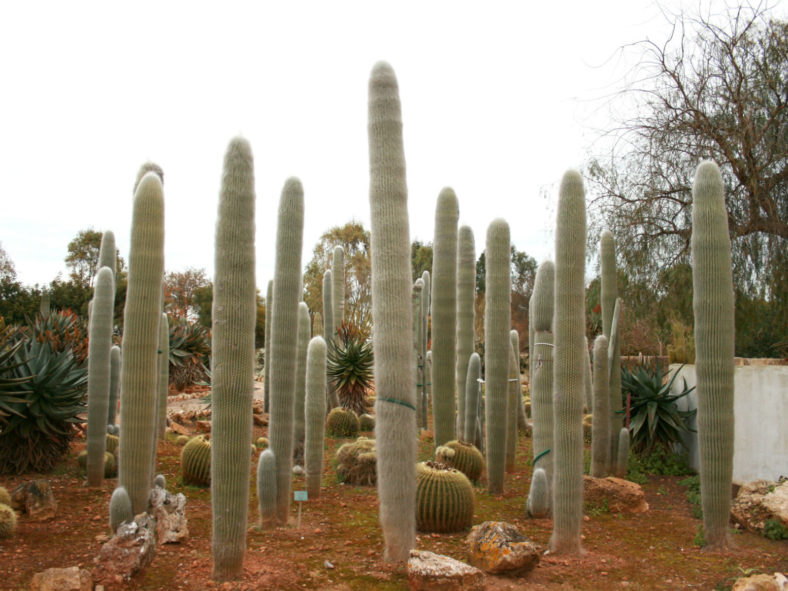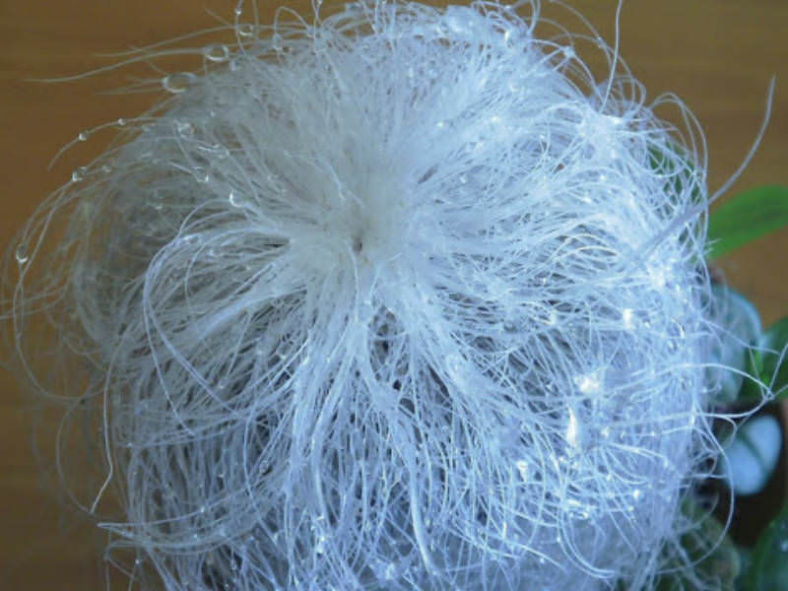Scientific Name
Cephalocereus senilis (Haw.) Pfeiff.
Common Name(s)
Old Man Cactus, Old Man of Mexico, Bunny Cactus, White Persian Cat Cactus
Synonym(s)
Cactus senilis, Cephalophorus senilis, Cereus senilis, Echinocactus senilis, Euporteria senilis, Pilocereus senilis
Scientific Classification
Family: Cactaceae
Subfamily: Cactoideae
Tribe: Pachycereeae
Genus: Cephalocereus
The specific epithet "senilis" (pronounced "SEE-nil-is") means "of or pertaining to old people; aged, senile" and refers to the shaggy coat of long, white hairs resembling unkempt hair on an elderly man.
Origin
Cephalocereus senilis is native to Guanajuato and Hidalgo in eastern Mexico.
Description
Cephalocereus senilis is a columnar cactus with clusters of erect, usually unbranched stems with 20 to 30 ribs and a shaggy coat of long white hairs, which is the most striking feature of this species. The stems can grow up to 50 feet (15 m) tall and 12 inches (30 cm) in diameter. Each areole bears 1 to 5 central spines, measuring up to 2 inches (5 cm) long and 20 to 30 hair-like laterals.
The flowers are whitish pink and can reach a length of 2 inches (5 cm. The plant may not flower until 10 to 20 years old. The fruits are pinkish-red, covered with yellowish hair, and can grow up to 1.2 inches (3 cm) long.

Hardiness
USDA hardiness zones 9b to 11b: from 25°F (-3.9°C) to 50°F (10°C).
How to Grow and Care
Old Man Cactus is mostly grown as a houseplant. It stays small and easily kept in a container for its entire life.
For indoor cactus growing, use a cactus mix or blend of sand, perlite, and topsoil. Also, use an unglazed pot for growing Old Man Cactus. This will allow the pot to evaporate any excess moisture. This cactus likes its soil on the dry side, and overwatering is a common cause of rot and disease.
Allow the top couple of inches of soil to dry out completely between waterings. Then in winter, reduce watering to once or twice during the season.
Fertilize with cactus food in early spring, and you might be rewarded with thick pink flowers. In the plant's natural habitat, it grows a pinkish-red fruit, but this is rare in captive cultivation.
Learn more at How to Grow and Care for an Old Man Cactus (Cephalocereus senilis).
Links
- Back to genus Cephalocereus
- Succupedia: Browse succulents by Scientific Name, Common Name, Genus, Family, USDA Hardiness Zone, Origin, or cacti by Genus
Photo Gallery
Click on a photo to see a larger version.


